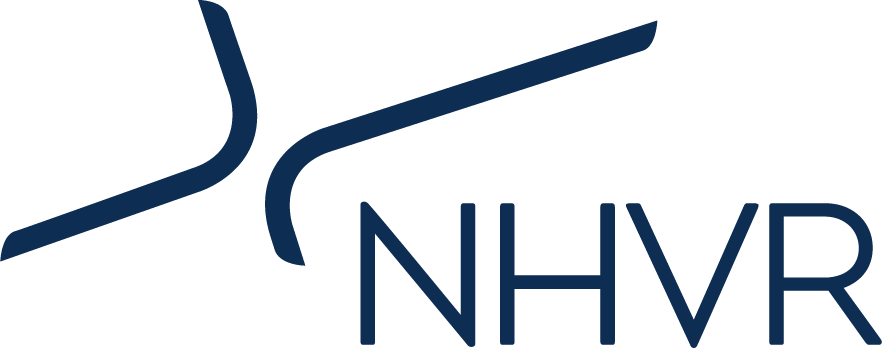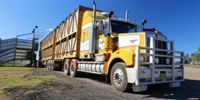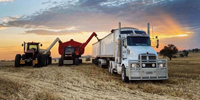Primary producers and heavy vehicle safety
As a primary producer, you have an important role to play in the safety of heavy vehicle drivers, whether you are using your own heavy vehicle or contracting the service.
Take some time at the start of the season, or before undertaking a task to identify and reduce the risks related to the safety of the heavy vehicle transport task. In particular have a plan in place to:
- manage fatigue
- monitor mass and loading
- ensure the mechanical safety of a heavy vehicle
- secure appropriate access and permits.
Chain of Responsibility
Heavy vehicle Chain of Responsibility laws create a primary duty that is similar to workplace health and safety obligations. This primary duty requires you to ensure the safety of transport activities that you influence or control.
Primary producers and contractors should take the time to ensure they are doing everything that is reasonably able to be done to identify, assess, reduce or wherever possible, remove safety risks related to the use of heavy vehicles.
Chain of Responsibility - primary producers
Under the Heavy Vehicle National Law if a primary producer is a party in the Chain of Responsibility, they have a duty (the primary duty) to ensure the safety of their activities to do with heavy vehicles.
Managing fatigue
Primary producers have an important role to play in managing the fatigue of heavy vehicle drivers, whether you are using your vehicle or someone else’s.
Where there are rules for operating fatigue-related heavy vehicles, the general principal is that drivers must not drive any heavy vehicle while impaired by fatigue.
Some of the key risk areas to consider regarding your fatigue level.
- Time spent continuously working
- Infrequent breaks
- Limited opportunity for sleep
- Inadequate sleep at night
- Shifts ending between midnight and 6am
- Extended shifts
- No extended rest
Heavy vehicle fatigue management - primary producers
Primary producers have an important role to play in managing the fatigue of heavy vehicle drivers, whether you are using your vehicle or someone else’s.
Awareness of mass and loading
Loaders, unloaders and operators all have an important role to play to ensure heavy vehicles carrying primary produce do not exceed their mass limits.
There are three classes of heavy vehicles for managing mass, with different limits for each type of heavy vehicle. Primary producers and contractors should be aware of their vehicle’s class and their mass limits.
- Classes of heavy vehicles in the HVNL chart (PDF, 2.6MB)
- Common heavy freight vehicles configurations chart (PDF, 1.1MB)
There are options available that allow operators some flexibility to make the most of vehicles’ capacity. These include the following:
- National Heavy Vehicle Accreditation Scheme’s mass management modules allow accredited operators to access additional mass concessions. These concessions allow vehicles to operate at Concessional Mass Limits (CML) for general access to the road network.
- High productivity vehicles such as PBS vehicle combinations offer industry higher productivity through innovative and optimised vehicle design.
- Different grain harvest management schemes currently operate in NSW, Queensland and Victoria. These are state-based schemes and therefore allowances for mass and operational conditions varying between states.
- NSW Grain Harvest Management Scheme
- Queensland Grain Harvest Management Scheme
- Victorian Grain Harvest Management Scheme
- South Australia does not currently have a scheme, but runs a mass loading management concession for both general mass and higher mass limit operations under the South Australia Farm Gate Grain Transport Mass Exemption Notice 2025 (No.1). For more information, see the Information Sheet - South Australia Farm Gate Grain Transport Mass Exemption Notice 2025 (No.1) (PDF, 154KB).
A safe heavy vehicle
Using heavy vehicles that are safe, well maintained and compliant will result in less unexpected down time, less stress on drivers and a more streamlined interactions with regulatory authorities.
If your heavy vehicle is not used regularly, you should refer to the manufacturers guidelines to ensure it is correctly serviced and have it checked by a certified mechanic before use.
All heavy vehicles must also comply with Vehicle Standards and the relevant Australian Design Rules which contain mandatory requirements for the safe design, construction and maintenance of vehicles and for the control of emissions and noise.
The NHVR’s National Heavy Vehicle Inspection Manual provides a consistent criteria for heavy vehicle inspections.
Before using a heavy vehicle, all drivers and operators should undertake a daily safety check. This is a quick visual inspection that can be undertaken on a heavy vehicle prior to leaving the property, depot or rest area. The Guide to creating heavy vehicle daily checks (PDF, 375KB) is a useful tool that assists operators and drivers to identify basic safety issues on a heavy vehicle before using it on a road.
Right vehicle for the right road
Heavy vehicles supporting the grain harvest (including agricultural vehicles) operate in numerous combinations that vary significantly in dimensions and mass. Vehicles that are over dimension or mass can only operate on approved routes under certain permit or notice conditions.
Therefore, it’s important that you plan your journey.
Access for heavy vehicles comes in two categories – General Access Vehicles and Restricted Access Vehicles. Not sure of your vehicle type? First, check if you drive a General Access Vehicle as these heavy vehicles generally don't need a permit when operating within mass and dimension limits.
If using a Restricted Access Vehicle (RAV) check whether it’s Class 1, 2 or 3.
Primary producers that operator or contract a Restricted Access Vehicle may be covered under a notice or may require a permit.
Check out our Agricultural vehicle permit page to see if your heavy vehicle is covered under a notice or whether you require a permit, issued by the NHVR.
Safety Management System
The NHVR encourages all parties in the heavy vehicle supply chain, including primary producers and contractors, to adopt and utilise a Safety Management System as part of their everyday business, to help effectively consider and manage their operations’ day-to-day safety risks.
For more information go to www.nvhr.gov.au/sms
This Roadmap will guide you through developing a Safety Management System (SMS). Each step contains some general advice, along with a suite of quick-guide documents, templates, worked examples and toolbox talks. You can utilise all of our provided templates as part of your own SMS and there is space to include your own company name and logo.
External links
The Glovebox Guide: Biosecurity, Emergency Animal Diseases and Preparing Livestock for Transport - LBRCA and MINTRAC developed this guide to give livestock transporters the knowledge and confidence to recognise the signs and behaviours in livestock that could indicate an animal may have an EAD.

 Accessibility tools
Accessibility tools




